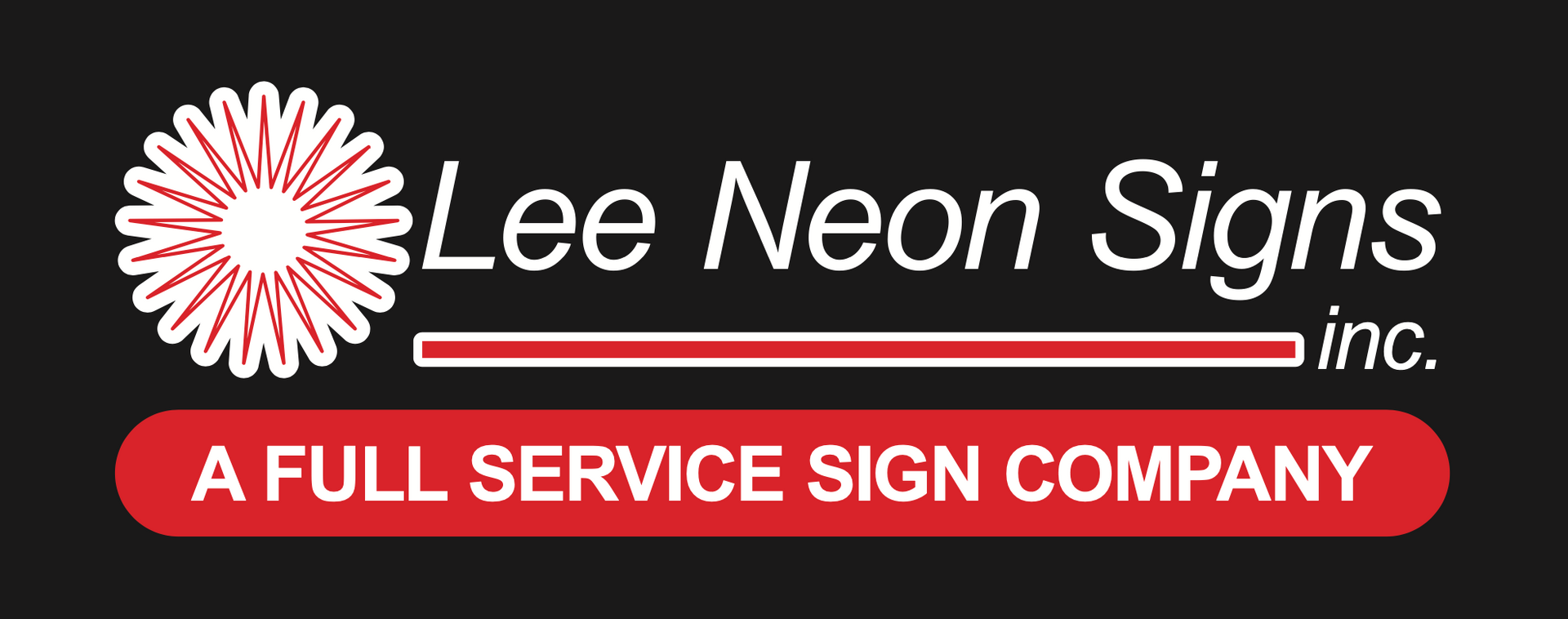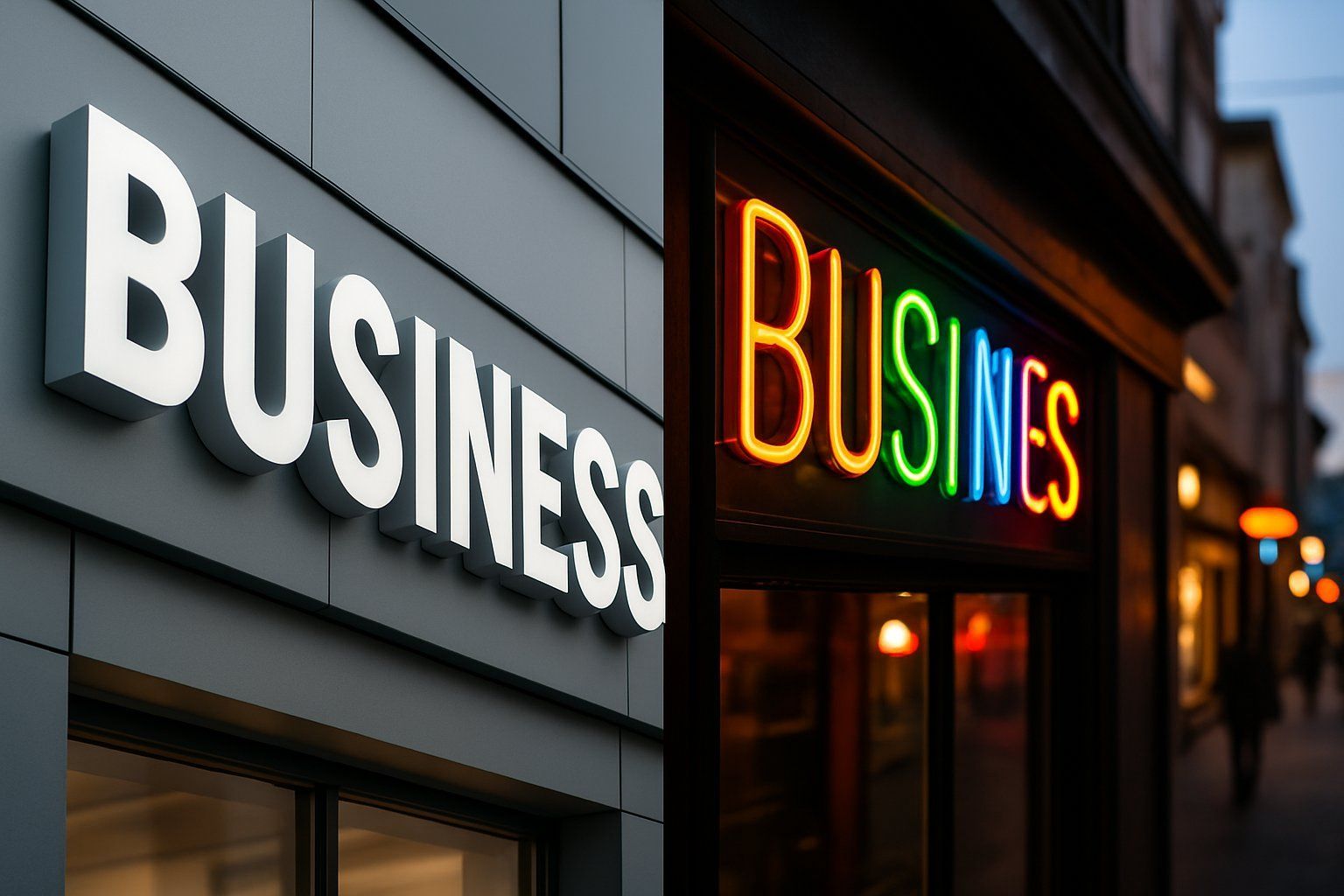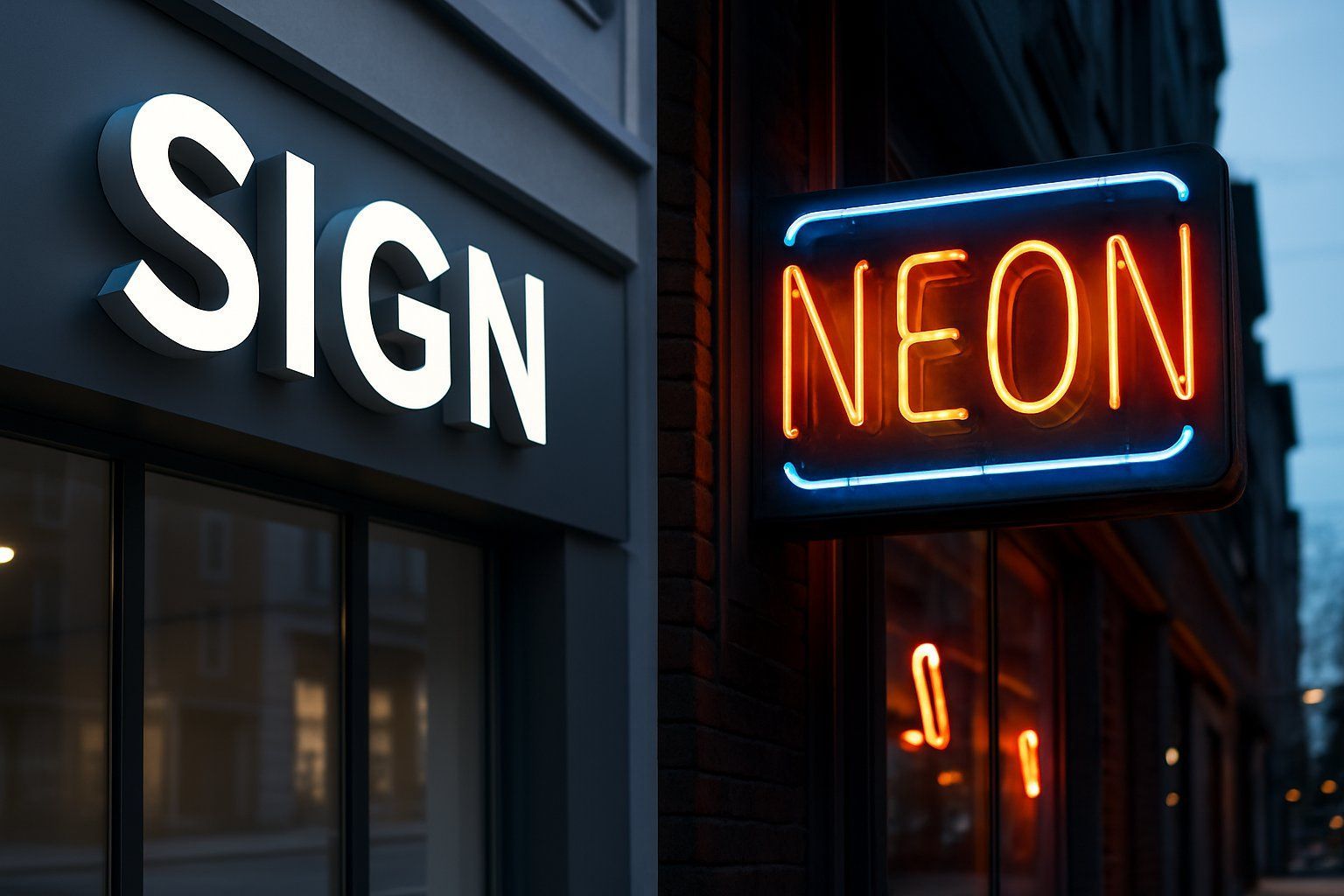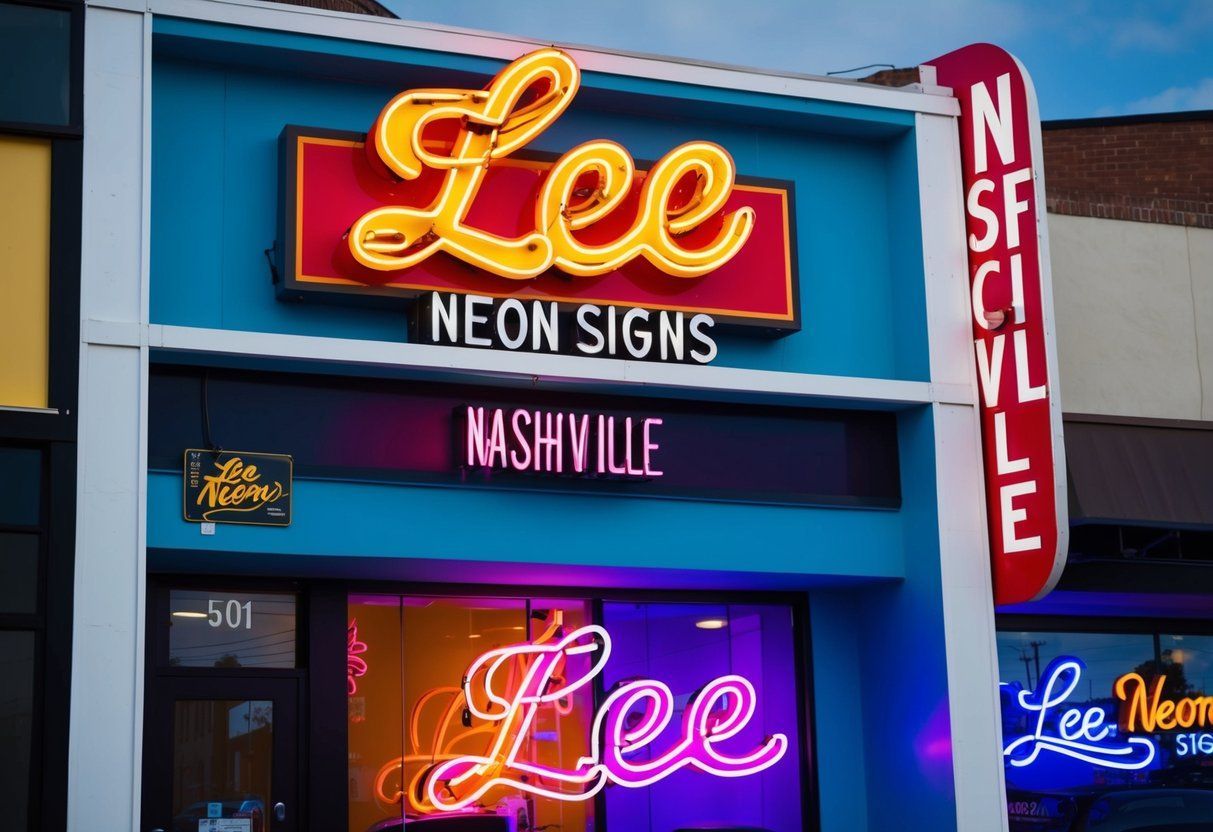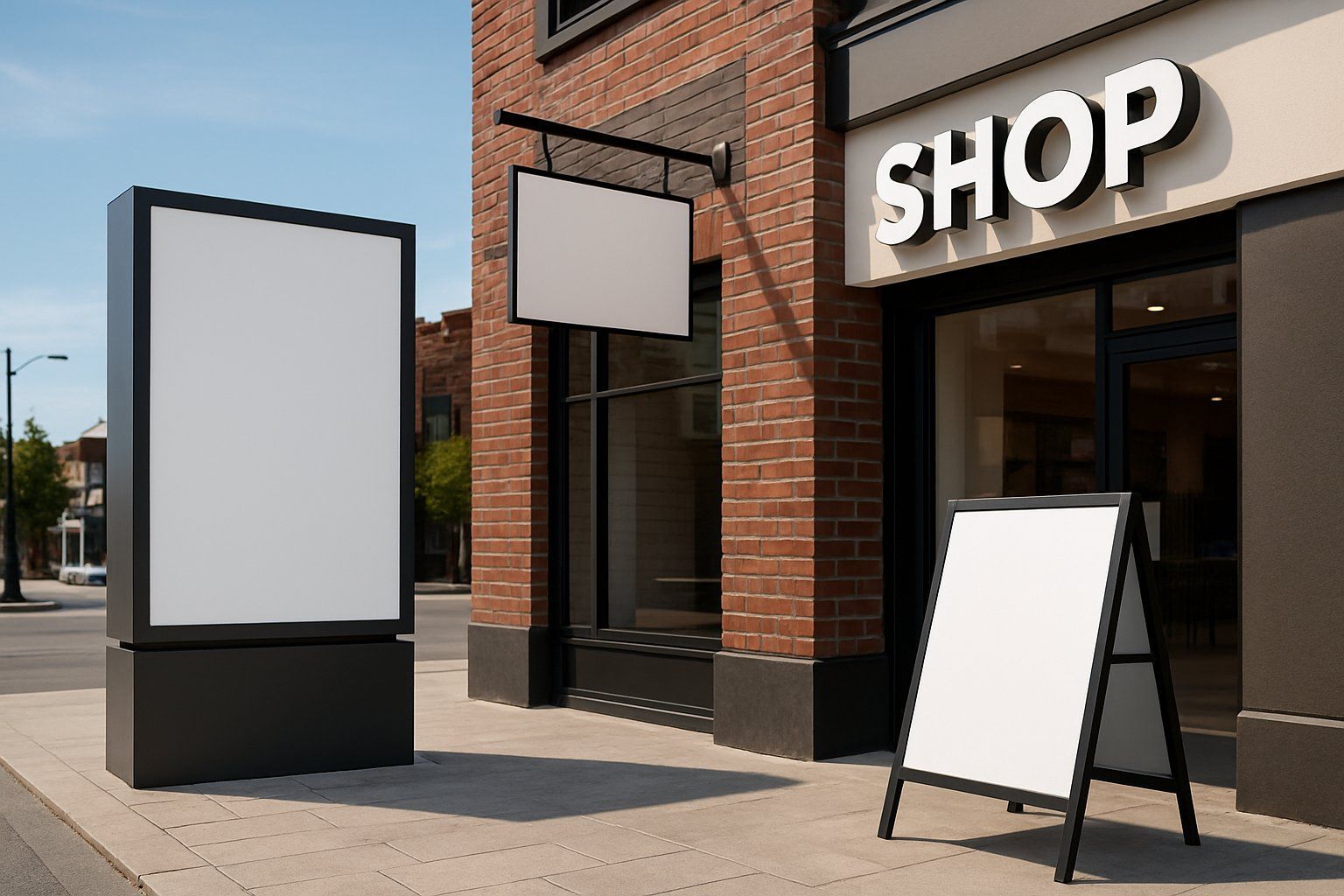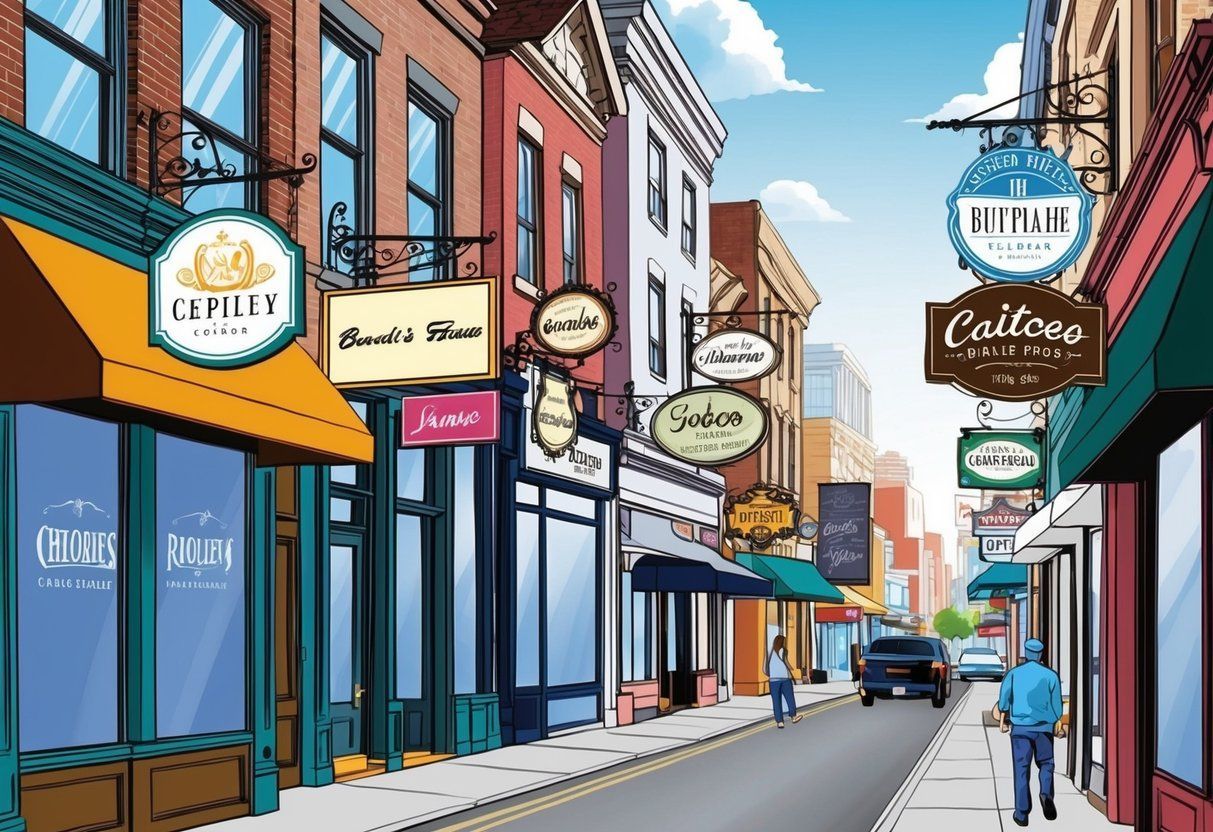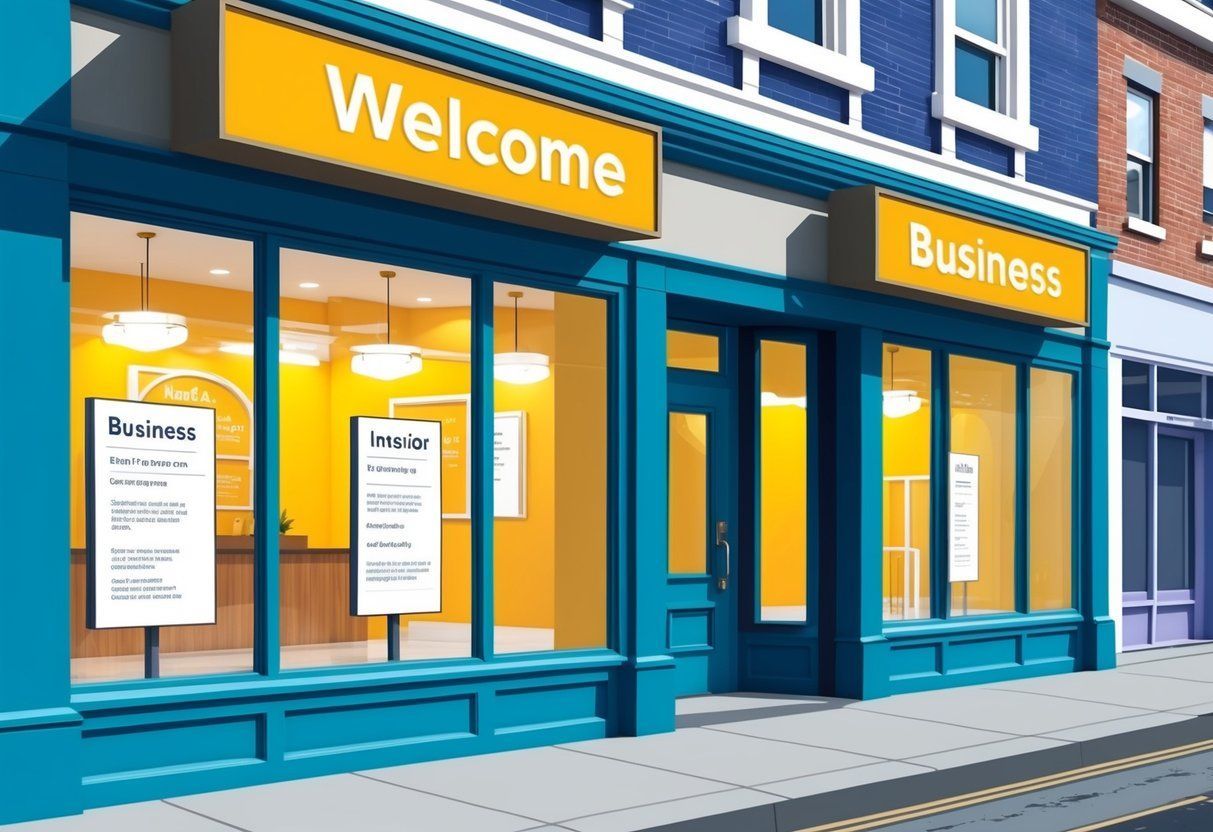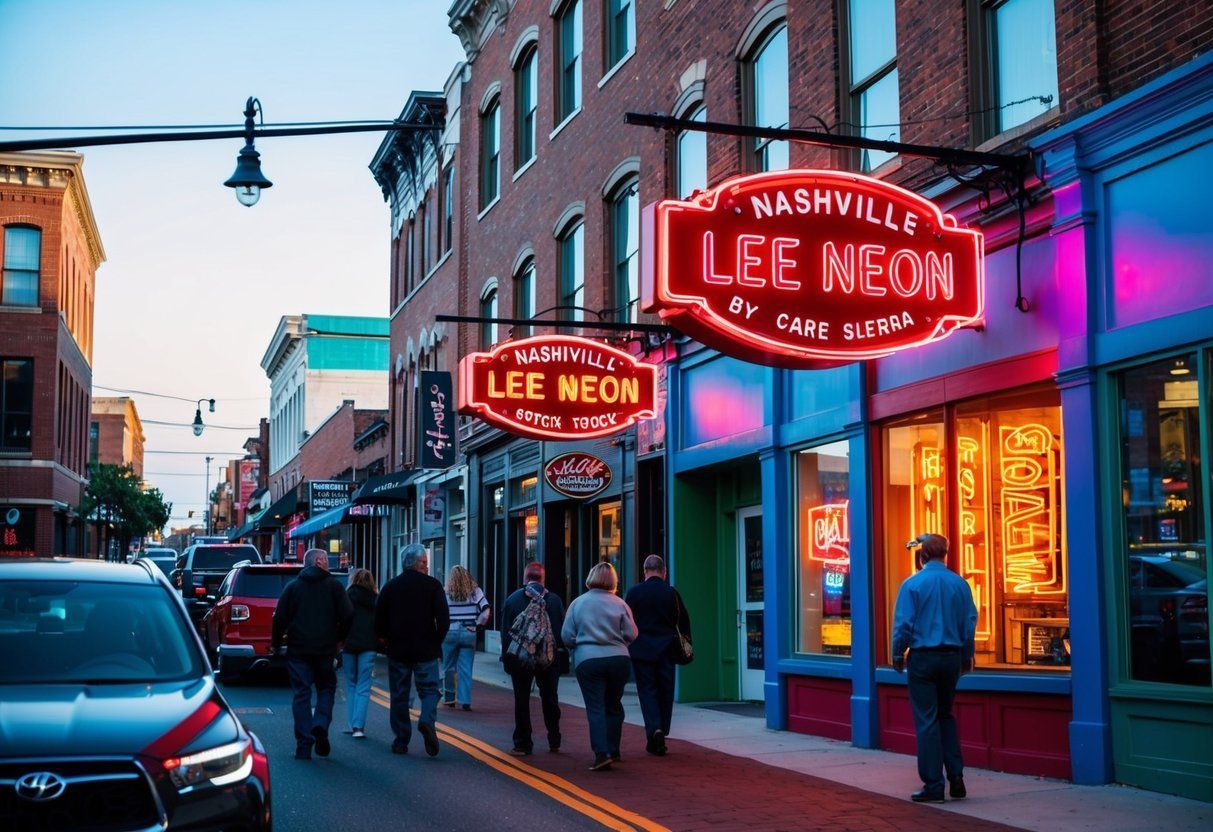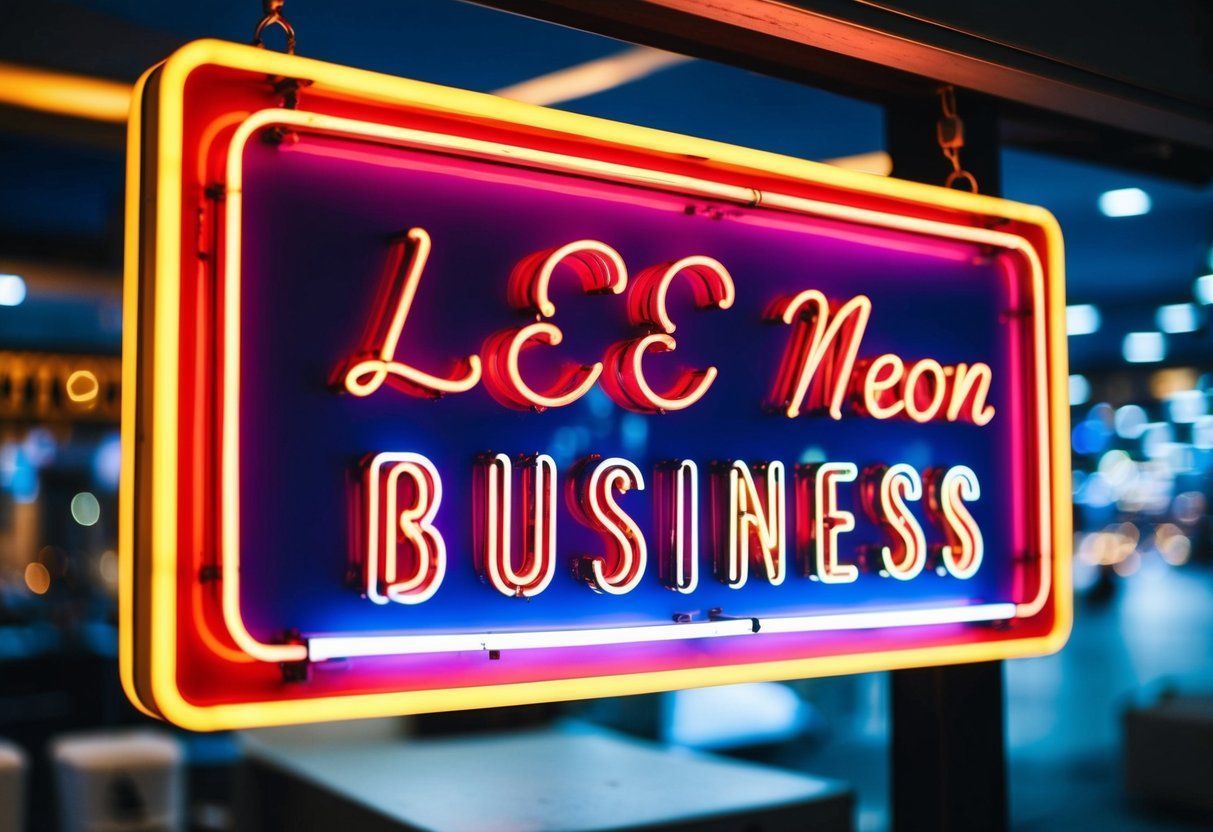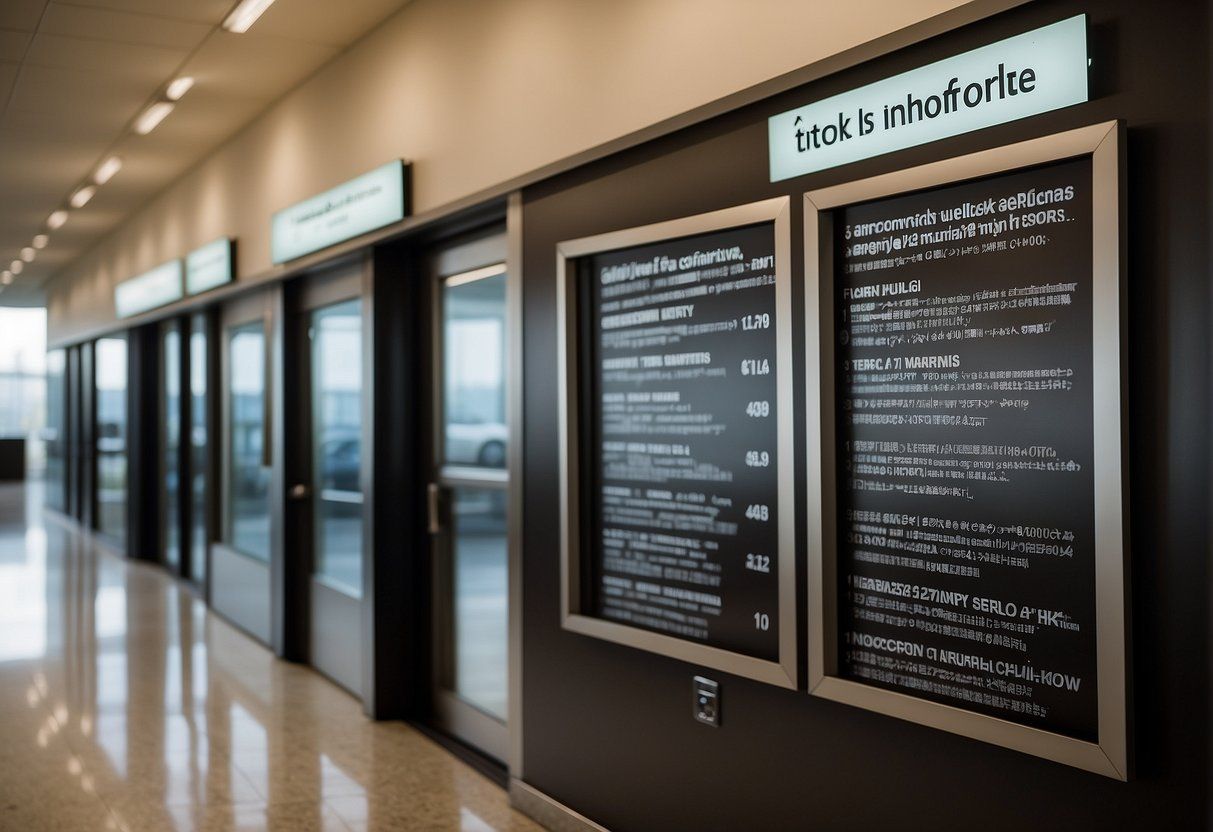Choosing the right sign for a business depends on visibility, style, and budget. Channel letters offer a strong, three-dimensional look with bright, energy-efficient LED lighting, making them perfect for high-visibility storefronts.
Neon signs, often made with flexible LED tubing today, create a warm, inviting glow that works well for close-up settings like cafés or bars.
Channel letters excel in durability and clarity, while neon signs offer more creative freedom and a unique visual appeal. Both have different installation needs and price points, so understanding these factors helps a business get the ideal sign.
They can also be combined for a powerful effect—channel letters outside for impact, neon inside for atmosphere.
Key Takeways
- Sign choice affects visibility and brand impression.
- Durability and design options vary between sign types.
- Budget and installation impact the final decision.
Understanding Channel Letters
Channel letter signs come in several styles and are made from durable materials designed for long-term outdoor use. They can be customized in shape, size, and lighting to fit various business needs.
Channel letters are often illuminated with energy-efficient LEDs and show clear visibility from a distance.
Types of Channel Letter Signs
Channel letters mainly come in four basic types:
- Front-Lit:
These have illuminated faces using LED lights, making the letters clearly visible both day and night.
- Back-Lit (Halo Lit):
Light shines from behind the letters, creating a glowing outline against the wall.
- Open Face:
The letter’s face is left open, revealing exposed neon or LED tubes inside for a retro look.
- Non-Lit:
These have no internal lighting and rely on the three-dimensional shape and materials to create impact.
Businesses choose based on visibility needs, lighting effect, and aesthetic preference.
Channel Letter Construction and Materials
Channel letters are built with a metal frame, usually aluminum, to resist rust and weather damage. The faces often use acrylic for smooth illumination.
LED channel letters use energy-efficient LED modules for lighting, which last long and reduce power costs. Coatings protect against UV rays and moisture.
Letters can be mounted directly on the building or attached to a raceway for easier installation.
Common Uses for Channel Letter Signage
Channel letter signage is popular for storefronts, malls, office buildings, and commercial centers. They work best where visibility from a distance is critical, such as busy streets or shopping complexes.
Businesses that want a professional and polished look often prefer channel letters. They are ideal when clear branding and easy readability are priorities, especially during both day and night.
What Are Neon Signs?
Neon signs use glowing tubes shaped into letters or designs. They produce vivid colors and a distinct light.
These signs have unique qualities in how they operate, their look, and where they are used most often.
How Neon Lights Work
Neon lights are made from long glass tubes filled with gases like neon, argon, or krypton. The tubes are bent to form specific shapes or letters.
When electricity passes through the gas inside, it glows. The color depends on the type of gas and sometimes a coating inside the tube.
The lighting process requires a transformer to supply a high voltage current. This powers the glow, making the sign bright and easy to see even at night.
Aesthetic Appeal of Neon Signs
Neon signs are known for their bright, glowing colors and classic look. They create a retro or vintage feel that many find attractive and eye-catching.
The tubes produce a soft, continuous light that draws attention without harsh glare. Their color range can include reds, blues, greens, and yellows depending on the gases used.
Their glow often feels warm and inviting, making them a popular choice for businesses wanting to create a nostalgic or artistic atmosphere.
Typical Applications for Neon Lights
Neon signs are common in bars, diners, and nightclubs, where their bright, colorful glow fits the atmosphere. They often display business names, logos, or simple images.
They are used where visibility at night is important. Their unique look makes them ideal for places aiming to stand out with a vintage or artistic style.
Some businesses choose neon signs to add personality and charm, especially if a classic or retro style supports their brand.
Comparing Pros and Cons
Both channel letters and neon signs have clear strengths and weaknesses. Choosing between them depends on factors like visibility, style, durability, and cost.
Each type serves different business needs and environments.
Benefits of Channel Letters
Channel letters offer excellent visibility, especially from a distance. Their three-dimensional design creates depth and shadow, making signs stand out on busy streets or in large commercial areas.
Using LED lighting inside the letters means they consume less energy compared to traditional neon, which helps reduce long-term costs.
They are highly customizable in terms of fonts, colors, and finishes. Businesses can get front-lit, backlit (halo), or non-lit signs, which adds to design flexibility.
Channel letters are also durable. Made from materials like aluminum and acrylic, they resist weather, UV damage, and require minimal maintenance over time.
Professional installation ensures they meet safety standards and stay securely mounted.
Advantages of Neon Signs
Neon signs, especially modern LED neon, offer a distinctive and artistic look. Their flexible silicone tubing allows for creative shapes and flowing script, ideal for branding that wants a playful or vintage vibe.
LED neon consumes low energy and lasts for over 100,000 hours, similar to LED channel letters. It is also more durable than traditional glass neon tubes, making it less fragile and easier to maintain.
Neon signs work well both indoors and outdoors. They attract attention up close and create an inviting atmosphere, helping businesses like cafés and bars increase social media shares.
Drawbacks to Consider
Channel letters usually cost more upfront due to materials and professional installation. The fabrication and wiring process is more complex, which can extend lead times.
They may also be less suited for intricate designs like fine script.
Neon signs can have lower visibility from a distance since their glow is softer and best seen up close. Although LED neon is more durable than old glass neon, it may still require occasional cleaning and careful handling.
Some local regulations or building codes can affect the use of either type, especially neon signs, so businesses should confirm compliance before installation.
Cost Comparison and Value
The cost of signage includes more than just the upfront price. It involves installation, maintenance, and energy use over time.
These factors affect the total value a business gets from channel letters or neon signs.
Initial Signage Investment
Channel letters typically cost more initially than neon signs. This is because each letter is custom-made from durable materials like aluminum and acrylic.
The design, fabrication, and professional installation all add to the price.
Neon signs, especially traditional glass types, tend to have a lower upfront price but can vary depending on size and complexity. LED neon, a modern alternative, often costs more than classic neon but less than channel letters.
Businesses should expect to pay more for channel letters when choosing high-quality materials and custom lighting options, while neon signs allow for creative designs at a potentially lower initial cost.
Long-Term Maintenance Costs
Channel letters require minimal upkeep. Their LED lights are energy-efficient and built to last many years without replacement.
Weather-resistant coatings and UV protection also reduce maintenance expenses for outdoor use.
Neon signs, once glass-based, needed careful handling and occasional gas refills, raising maintenance costs. LED neon signs have improved durability but still may require cleaning and minor repairs.
Overall, channel letters tend to have lower long-term maintenance costs. Neon signs may cost more to maintain due to fragility and older technology unless they use modern LED options.
Energy Consumption and Savings
Channel letters use LED technology, which is highly energy-efficient. LED lights consume less electricity and last longer than gas-filled glass tubes in traditional neon signs.
Classic neon signs use more energy because they rely on electrified gases. LED neon reduces energy use significantly but often remains less efficient than LED channel letters.
Energy efficiency translates into lower utility bills over time. Businesses focused on cutting operational costs often prefer channel letters for their economic benefits.
Neon signs offer a brighter glow but may increase power consumption slightly.
Design and Customization Options
The choice between channel letters and neon signs affects color choices, lighting styles, and how a business’s brand is shown. Both offer unique ways to customize a sign for different needs and visibility goals.
Color and Lighting Effects
Channel letter signage uses LEDs inside each letter or logo piece. This allows for bright, consistent light in many colors.
LED channel letters can have front-lit, full-lit, or halo lighting, with options like cool whites or vibrant colors. The LED lights are energy-efficient and last for years with low maintenance.
Neon lights offer a glowing effect with soft edges that stand out in dim or indoor spaces. Modern neon signs use LED neon tubing, which bends into shapes easily and has vivid colors.
This lighting creates a warm, inviting atmosphere but may not be as bright from far away.
Both sign types offer dimmable and color-mixing options. Channel letters tend to be sharper and brighter outdoors.
Neon signs excel at creative shapes and smooth light flow.
Brand Identity and Visibility
Channel letters create a bold and professional look. Their three-dimensional design adds depth and clear readability.
This makes them excellent for storefronts needing strong visibility from a distance or busy streets.
Neon is better for brands wanting a playful or artistic vibe. It suits intimate spaces like cafés or bars that want to attract social media sharing.
Neon signs often draw attention up close and encourage interaction.
Both types can be tailored with fonts, sizes, and mounting styles. Channel letters usually fit formal, polished brands.
Neon lights appeal to businesses aiming for creativity and approachability. The right choice depends on whether visibility or brand feel is the priority.
Choosing the Right Sign for Your Business
Selecting the best signage depends on how visible and lasting it needs to be, where it will be placed, and what kind of impression the business wants.
Cost, maintenance, and customer appeal also play key roles in this decision.
Factors to Evaluate
Visibility is a top priority. Channel letters stand out with their 3D design and bright LED lighting, making them easy to read from a distance.
Neon signs offer a softer glow, best suited for closer views and creating a warm atmosphere.
Durability and maintenance vary. LED channel letters are built to last, with weather-resistant materials and low energy use.
Neon signs, especially modern LED neon, can be durable indoors and outdoors but may require gentle cleaning to keep their glow.
Cost differs between the two. Channel letters usually mean higher upfront costs due to custom fabrication and installation but save money on energy.
Neon signs can be less expensive initially but may involve more upkeep over time.
Suitability for Indoor vs Outdoor Use
Channel letters excel outdoors. Their sturdy build and strong LED lighting make them ideal for storefronts on busy streets or highways, ensuring clear visibility day and night.
Neon signs are versatile but often preferred indoors or under covered areas. They add charm and are effective in bars, cafes, or retail spaces where an inviting vibe is important.
LED neon signs have improved outdoor durability but still perform best when shielded from harsh weather.
For indoor use, both options work well, but neon signs bring a unique artistic touch.
Channel letters indoors can reinforce branding but are more common outside for visibility.
Trends and Industry Preferences
Retail stores, gyms, and corporate businesses tend to choose channel letters for their professional look and high impact. They signal reliability and make a bold statement.
Neon signs are popular in creative industries, hospitality, and pop-up shops. Their playful and colorful light attracts younger audiences and encourages social sharing online.
Some businesses combine both. They use channel letters outside for clarity and neon signs inside to build a fun, memorable atmosphere.
The choice will reflect the brand’s identity and how the business wants customers to feel as they approach and enter.
Frequently Asked Questions
Choosing between channel letters and neon signs involves weighing factors like visibility, style, cost, and upkeep. Each sign type has strengths that serve different business needs and brand goals.
What are the advantages and disadvantages of channel letters compared to neon signs?
Channel letters offer high visibility from a distance and a bold, professional look. They are durable and customizable in size, font, and finish.
Neon signs provide a softer, glowing light that creates a warm and artistic vibe. They are great for close-up viewing and attracting social media attention.
Older glass neon can be fragile. LED neon is more durable.
How does the cost of neon signage compare to channel lettering for businesses?
Neon signs typically cost less upfront, especially for smaller or creative designs. Installation is usually simpler and quicker.
Channel letters often have higher initial costs due to materials and professional installation. They require more fabrication and wiring work, raising the price.
What considerations should be taken into account when choosing between channel letters and neon for storefront signs?
Business location matters. Channel letters work best in high-traffic, busy areas where distant visibility is key.
Neon signs are suited to businesses wanting a playful or artistic style. They are also ideal for indoor use where close engagement is expected.
Maintenance, branding goals, and how the sign fits with the building’s look are important factors.
How do channel letters and neon signs differ in terms of maintenance and durability?
Channel letters are weather-resistant and UV-protected. They require little upkeep due to LED lighting.
LED neon signs are shatterproof and last a long time. Cleaning requires gentle wiping to keep colors vibrant.
Older traditional neon is more fragile and harder to maintain.
What impact does the choice between neon and channel letters have on a business’s brand image?
Channel letters create a bold and polished image. They are often associated with professionalism and reliability.
Neon signs suggest creativity, fun, and approachability. They can make a brand feel trendy or welcoming, especially in casual or artistic settings.
Can you highlight the energy efficiency of channel letters versus neon signs for business use?
Channel letters use LED lighting, which is very energy efficient and requires less power over time.
Modern LED neon signs also use low power compared to traditional glass neon. LEDs generally lead in efficiency.…
